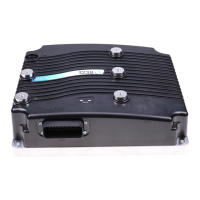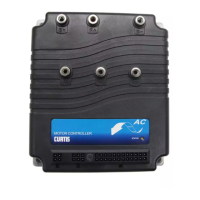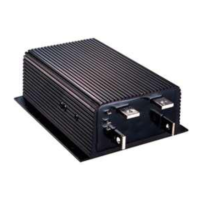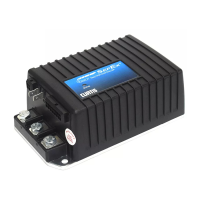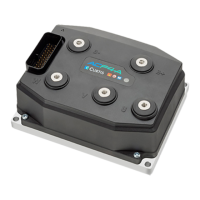APPENDIX A
1212 & 1212P Manual - Sep 2019
Return to TOC
pg. 42
In some applications, the vehicle designer will need to mount the controller within a shielded box on
the end product. e box can be constructed of just about any metal, although steel and aluminum
are most commonly used.
Most coated plastics do not provide good shielding because the coatings are not true metals, but
rather a mixture of small metal particles in a non-conductive binder. ese relatively isolated particles
may appear to be good based on a dc resistance measurement but do not provide adequate electron
mobility to yield good shielding eectiveness. Electroless plating of plastic will yield a true metal and
can thus be eective as an RF shield, but it is usually more expensive than the coatings.
A contiguous metal enclosure without any holes or seams, known as a Faraday cage, provides the
best shielding for the given material and frequency. When a hole or holes are added, RF currents
owing on the outside surface of the shield must take a longer path to get around the hole than if
the surface was contiguous. As more “bending” is required of these currents, more energy is coupled
to the inside surface, and thus the shielding eectiveness is reduced. e reduction in shielding is a
function of the longest linear dimension of a hole rather than the area. is concept is oen applied
where ventilation is necessary, in which case many small holes are preferable to a few larger ones.
Applying this same concept to seams or joints between adjacent pieces or segments of a shielded
enclosure, it is important to minimize the open length of these seams. Seam length is the distance
between points where good ohmic contact is made. is contact can be provided by solder, welds, or
pressure contact. If pressure contact is used, attention must be paid to the corrosion characteristics
of the shield material and any corrosion-resistant processes applied to the base material. If the ohmic
contact itself is not continuous, the shielding eectiveness can be maximized by making the joints
between adjacent pieces overlapping rather than abutted.
e shielding eectiveness of an enclosure is further reduced when a wire passes through a hole in
the enclosure; RF energy on the wire from an external field is re-radiated into the interior of the
enclosure. is coupling mechanism can be reduced by filtering the wire where it passes through
the shield boundary. Given the safety considerations involved in connecting electrical components to
the chassis or frame in battery powered vehicles, such filtering will usually consist of a series inductor
(or ferrite bead) rather than a shunt capacitor. If a capacitor is used, it must have a voltage rating and
leakage characteristics that will allow the end product to meet applicable safety regulations.
e B+ (and B–, if applicable) wires that supply power to a control panel should be bundled with the
other control wires to the panel so that all these wires are routed together. If the wires to the control
panel are routed separately, a larger loop area is formed. Larger loop areas produce more efficient
antennas which will result in decreased immunity performance.
Keep all low power I/O separate from the motor and battery leads. When this is not possible, cross
them at right angles.
